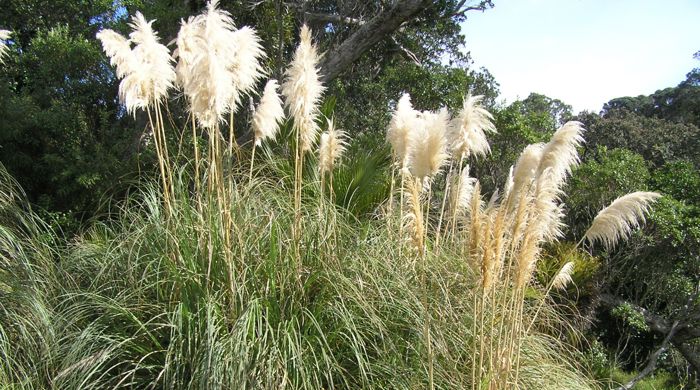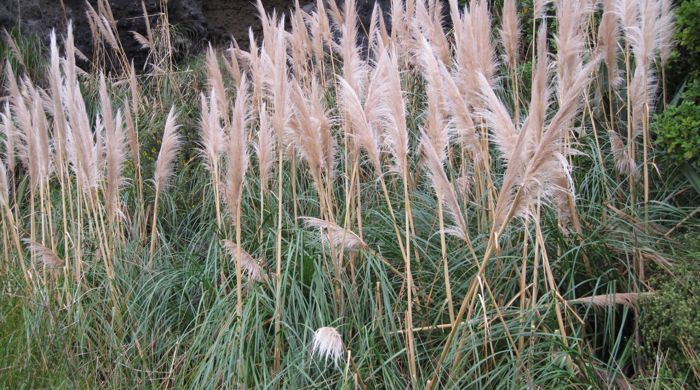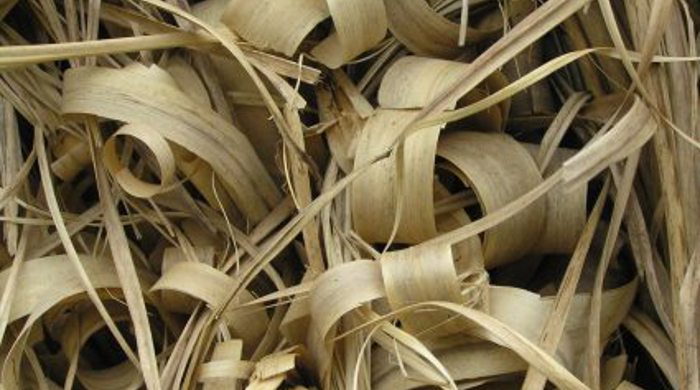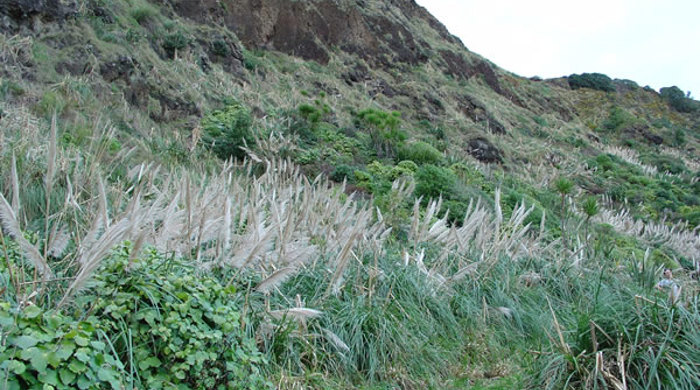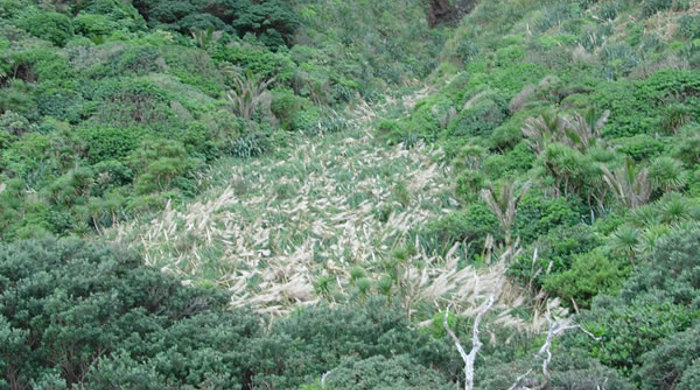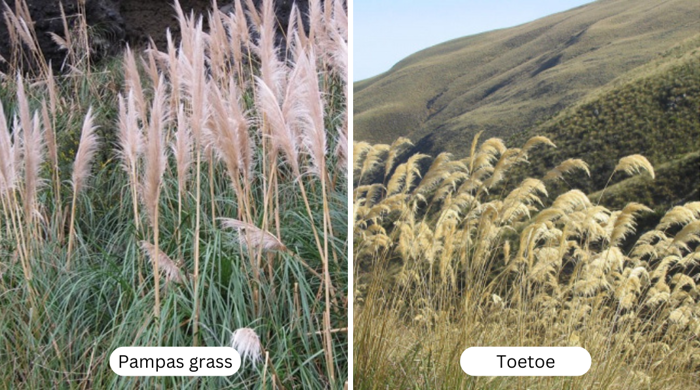Cortaderia jubata and C. selloana
Pampas grass
Family: Poaceae
Origin: South America
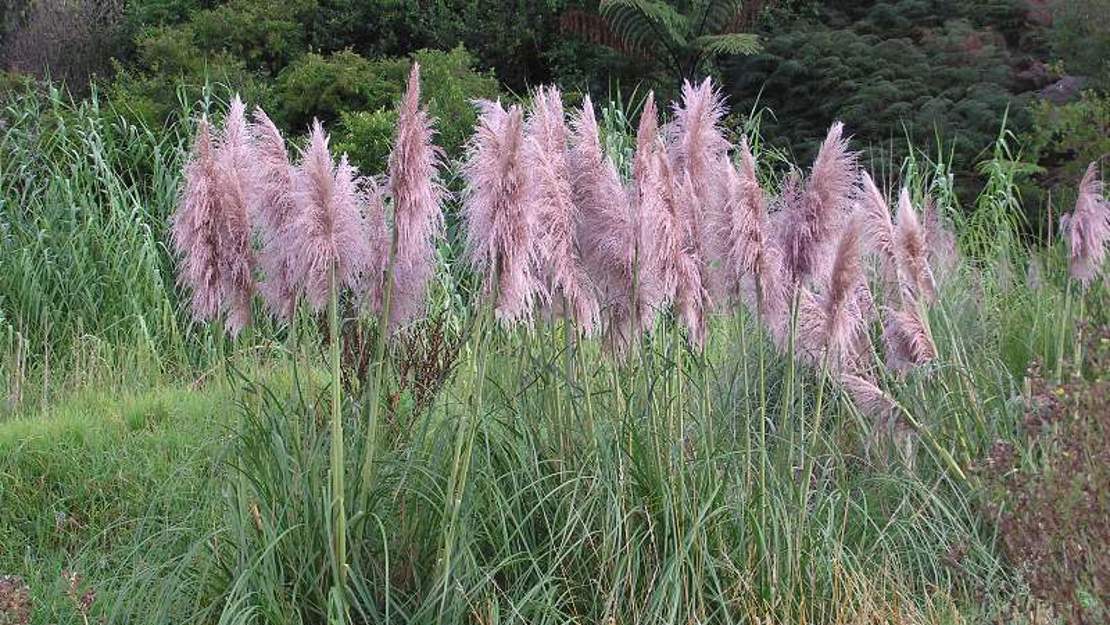
Regional Pest Management Plan (RPMP) status
- Whole region — Sustained control
- Waitākere Ranges Heritage Area priority status
- National Pest Plant Accord Species
- Parkland with Significant Ecological Areas — Site-led (on-park and buffer)
General description
Clump-forming grasses < 4 m tall. Leaves are sharp and mostly develop from base. Dead leaf bases spiral-like wood shavings. Flowerheads are erect, dense, fluffy, white/pink/purple fading to dirty white/yellow/brown and borne in January – June.
What you need to know
To help protect our environment:
- You must not breed, distribute, release or sell pampas grass. As pampas grass is a National Pest Plant Accord species, these restrictions apply within the Auckland region and across the whole of New Zealand.
- You must not plant pampas grass within the Auckland region, unless you are transferring an existing plant on your land to another location within the boundaries of the same property.
- You must destroy any pampas grass on land that you occupy if it has been planted in breach of the above rules and you are directed to do so by an authorised person.
Transport corridor operators must destroy all pampas grass on any transport land that is located within the Waitākere Ranges road corridor weed control zone.
View a map of park buffers where this applies.
To find out more about how we’re protecting Auckland’s parkland from pest plants, visit caring for our park buffers.
Habitats
Disturbed areas, roadsides, slips, cliffs, riparian areas, coastal areas, estuaries, scrublands, forest canopy gaps, plantations.
Dispersal
Seeds dispersed by wind and animals. Human-mediated dispersal through movement of contaminated gravel and vehicles.
Impact on environment
Forms dense colonies, replacing native plants in open or disturbed habitats. Provides habitat for invasive mammals. Smothers young trees and disrupts harvesting in forestry plantations. Can create a significant fire hazard.
Control
Site Management
Follow up treated areas 3 times per year. Encourage natural regeneration of native plants or replant treated areas where possible after 2-3 treatments to establish dense ground cover and minimise reinvasion.
Recommended approaches
Physical control
Method: Dig out.
Plant parts requiring disposal: Seeds.
Disposal options: Remove to greenwaste or landfill if practical.
Biocontrol
Biocontrol is currently not available for this species.
Community agrichemical control recommendations
Basic Growsafe certified: Foliar spray with 200ml glyphosate green per 10L of water.
Certified Handler/Experienced agrichemical user: Foliar spray with 200ml glyphosate green per 10L of water and 20ml penetrant. For infestations amongst desirable broadleaf species foliar spray with 150ml haloxyfop-P-methyl per 10L of water.
Caution: When using any herbicide or pesticide please read the label thoroughly to ensure that all instructions and safety requirements are followed.
